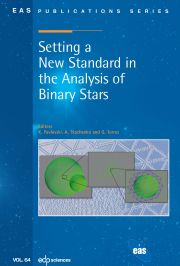Crossref Citations
This article has been cited by the following publications. This list is generated based on data provided by Crossref.
Ford, Eric B.
Moorhead, Althea V.
and
Veras, Dimitri
2011.
A Bayesian surrogate model for rapid time series analysis and application to
exoplanet observations.
Bayesian Analysis,
Vol. 6,
Issue. 3,

